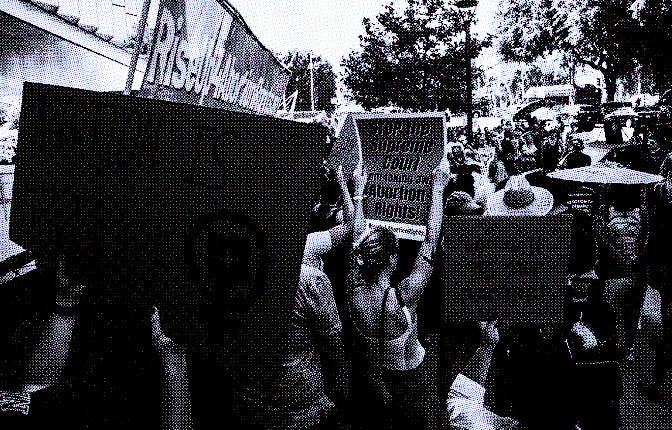Where is the post-Roe outrage?
It might feel like there’s a lack of protests after the Supreme Court’s decision, but immediate outrage is only a match for a much larger blaze.

If there’s one image the United States prides itself on, it’s that of protector of human rights. But rights in the U.S. are incredibly tenuous, especially if you’re not a cis white guy. On June 24, the conservative-skewed Supreme Court overturned Roe v. Wade, the landmark 1973 decision making abortion access a federal right — which only further proved how fragile basic rights really are in this country. The decision sparked immediate outrage, with protesters pouring into the streets — and then that was it. Democratic politicians seemed utterly unprepared for the moment, while Republicans declared it a literal holiday.
It might seem like the outrage is waning — like people are already acquiescing to this new reality. But as for long as Roe has been under attack, local organizers have gathered kindling for people’s initial rage to further ignite.
Roe’s overturn has been a long time coming. Even before it was foretold by last month’s leak of Justice Samuel Alito’s draft majority opinion, Roe had been under attack for decades. Anti-abortion movements have lived not only in arson and fire-bombings but in the offices of conservative and liberal politicians alike. On Friday, though, the Supreme Court solidified everything with its decision in Dobbs v. Jackson Women’s Health Organization. In its ruling, the conservative majority of the Court wrote that “the Constitution does not confer a right to abortion,” overturning both Roe and 1992’s Casey v. Planned Parenthood, which reaffirmed Roe’s protections. The Court added that “the authority to regulate abortion is returned to the people and their elected representatives.” Since then, at least 10 states have effectively banned abortions, with some relying on trigger laws to do so.
And so, over the weekend, the U.S. erupted in protests, as hundreds of thousands of people nationwide took to the streets. In Washington, D.C., people even gathered outside of the Supreme Court itself, with some carrying “Abort SCOTUS” signs or writing “ABORT THE COURT” on posts on the Capitol grounds. As the weekend came to an end, though, so did the massive protests. But that shouldn’t be taken as a sign that the movement for reproductive agency is without aim.
The initial outrage following political events like Roe’s overturn is often looked to as the expression of a movement’s strength. As the first protests wane, the lack of people on the streets can mistakenly be read as the absence of a movement. That’s in part because as the big actions fade so does the mainstream media coverage that helps them gain increased attention. But if there’s one thing to remember about revolution, it’s that it takes a long, long goddamn time.
In the U.S., people often learn about social movements in their most condensed forms. For example, the Civil Rights Movement is presented as follows: Rosa Parks sat down once, Martin Luther King Jr. spoke, people got beat up, and then the good guys won. But this oversimplification erases that the Civil Rights Movement, like all movements, relied on coalitions such as the Student Nonviolent Coordinating Committee, the Deacons of Defense, and the Freedom Democratic Party.
While single moments of action like the Children’s Crusade or Bloody Sunday have permanent register in our minds, the Civil Rights Movement involved decades of work. And in many ways, it’s still not done. The U.S. loves to present movements as living in their own moments. But the battle for reproductive justice is proof of the interconnectivity of both movements and time.
With Roe’s overturn, many bemoan that we’ve been catapulted into the past. We have not. This is 2022. The past is today, and tomorrow, because it has been never-ending. That may feel suffocating, but personally this is where I find inspiration. It’s also where I find the type of anger that can last beyond the initial pain. As Audre Lorde said in a 1981 speech: “Anger expressed and translated into action in the service of our vision and our future is a liberation and strengthening act of clarification.”
As it continues, the fight for reproductive justice, especially in a post-Roe era, isn’t going to look just one way. The demands may have the same roots, but different specifics. That’s fine. Why would organizers in Texas try mimicking people in Minnesota? Reproductive rights vary state by state now; access varies from county to county. This variation isn’t the downfall of a movement. It’s simply opportunity. And while people may miss the initial outrage, that emotion is only a match. Strong enough to burn, sure, but only for a second or two before it becomes nothing. The match needs both kindling and time before it becomes an inferno. And that kindling exists in the careful groundwork of not only reproductive justice organizers, but in all other ongoing movements.